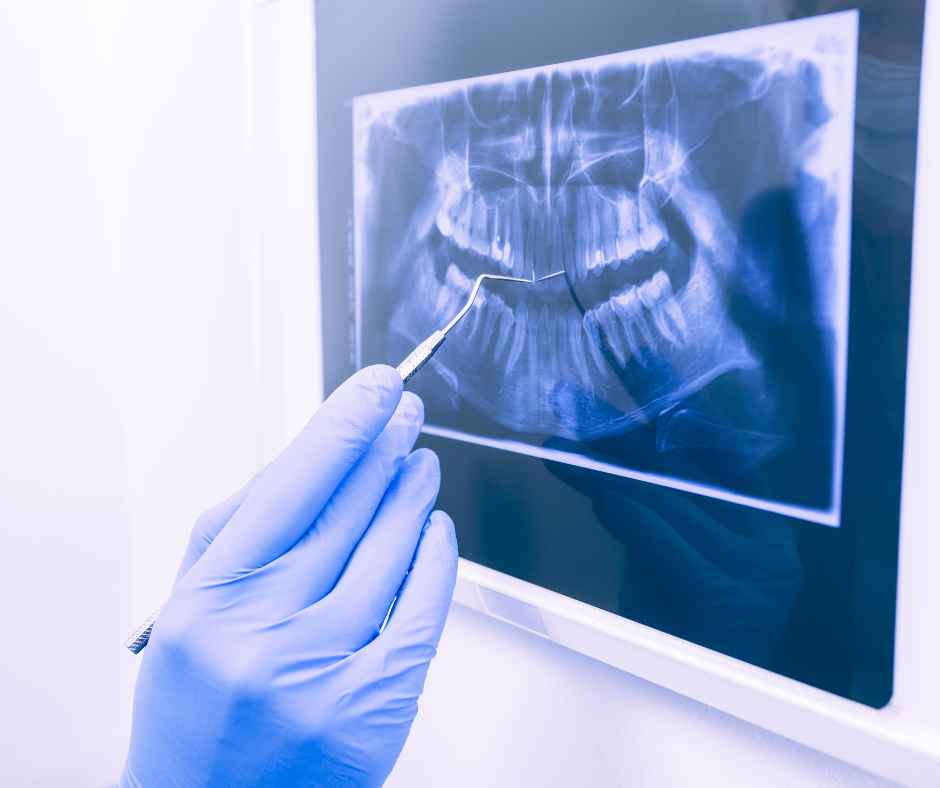Understanding Dental X-Rays

Picture-Perfect Smiles: The Magic of Dental X-Rays in Modern Dentistry
When it comes to maintaining optimal oral health, regular visits to the dentist are crucial. Among the various tools and techniques dentists use to ensure your oral well-being, dental X-rays stand out as a fundamental diagnostic tool. These X-rays provide valuable insights that are often hidden from the naked eye, enabling dental professionals to identify potential issues before they become more severe.
In this blog post, the Fairfield Dental Arts team delves into the world of dental X-rays, exploring their importance, types, benefits, and safety considerations.
The Importance of Dental X-Rays
Dental X-rays, also known as radiographs, are essential to comprehensive dental care. They play a pivotal role in diagnosing and treating oral health conditions that might not be immediately visible during a routine dental examination. These images allow dentists to detect problems like cavities, gum diseases, impacted teeth, and underlying bone issues.
Types of Dental X-Rays
There are several types of dental X-rays, each serving a unique purpose:
- Bitewing X-Rays: These X-rays provide a detailed view of the upper and lower back teeth. They are commonly used to detect cavities between teeth and monitor the health of the bone supporting the teeth.
- Periapical X-Rays: These X-rays focus on one or two specific teeth. They are used to capture the entire tooth, from the crown to the root, making them ideal for diagnosing issues such as abscesses or root infections.
- Panoramic X-Rays: Panoramic X-rays capture a broad view of the entire mouth, including the teeth, jawbone, and surrounding structures. These images are valuable for assessing impacted teeth, jaw joint problems, and overall tooth development.
- Orthodontic X-Rays: Orthodontic X-rays help orthodontists plan for braces or other orthodontic treatments. They provide insights into tooth alignment and the development of incoming teeth.
- Cone Beam Computed Tomography (CBCT): CBCT is a specialized X-ray technique that provides three-dimensional images of the teeth, jawbone, and facial structures. It is commonly used for complex cases, such as implant placements and orthognathic surgery.
Benefits of Dental X-Rays
The benefits of dental X-rays are numerous:
- Early Detection: X-rays can detect dental issues, such as gum disease, in their early stages, preventing them from progressing into more severe conditions.
- Accurate Diagnosis: X-rays enable dentists to accurately diagnose problems that may not be visible to the naked eye, leading to better treatment planning.
- Treatment Precision: With detailed X-ray images, dental professionals can plan and execute treatments with higher precision, reducing the risk of complications.
- Monitoring Development: X-rays help monitor the development of teeth in children and adolescents, ensuring that they grow in properly and without complications.
- Customized Treatment Plans: The insights gained from X-rays allow dentists to create personalized treatment plans tailored to each patient’s unique needs.
Safety Considerations
Dental X-rays are safe when performed with proper precautions. Modern equipment and techniques minimize radiation exposure, making the risks negligible. Pregnant women and young children are typically provided additional protective measures to ensure their safety during X-ray procedures.
Contact Fairfield Dental Arts to schedule your dental cleaning and check-up appointment!
If you are worried about your teeth, need a cleaning, or are experiencing any dental problems, give Fairfield Dental Arts a call at (203) 254-3780. We are your family’s dentist and proudly provide expert oral care for people of all ages!


